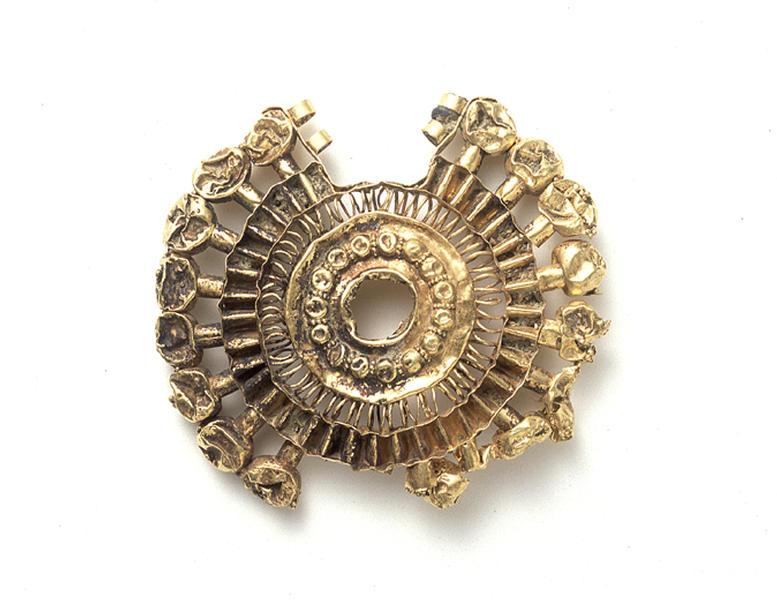Earring
- 4th century B.C.
- Gold
- H-4.4 W-4.9
Catalogue Entry
4th century B.C.
Gold
H. 4.4 cm, W. 4.9 cm
The center of a flat circle whose one side is hammered into a pattern of short rectangles is surrounded by a spiral-shaped gold wire with attached wavy edged flat circles. The outer edge of these circles are surrounded by 19 pomegranate-shaped decorations, two of which have been lost. A ring that would have been used to attach the earring to the ear remains at the top of the piece. R. Ghishman has indicated that this shape of earring fits into the flow of earring styles from the 4th century BC excavated from Susa (Louvre Sb 2764, 2765), and can be seen as an intermediary shape between the 5th to 4th centuries Hamadan earring (Louvre AO 3171) and the Caucasus earrings (Teheran, private collection).
Earrings
A rich variety of styles can be found in the earring group, and there are many more earrings than those found in the Oxus treasure. These earrings can be basically divided into two groups: simple items and elaborated items. The simple earrings are simply open loops, or those with small fasteners. The other group includes pendants in addition to the fasteners. There are more of the open loop form, and as there is no clear difference in period between the different styles of simple forms with small granules or rings for attaching pendants, it is hard to assign dates to these works. The works with small fittings for inlay or granulation are thought to date from the Hellenistic period. The majority of these earrings are made of silver with gold plating, and they were the work of skilled craftsmen.
Earring
Earring
Earring
Earring
Earring
Earring
Pair of Earrings
Earring
Earring
Earring
Earring
Earring
Earring
Earring
Earring
Earring
Earring
